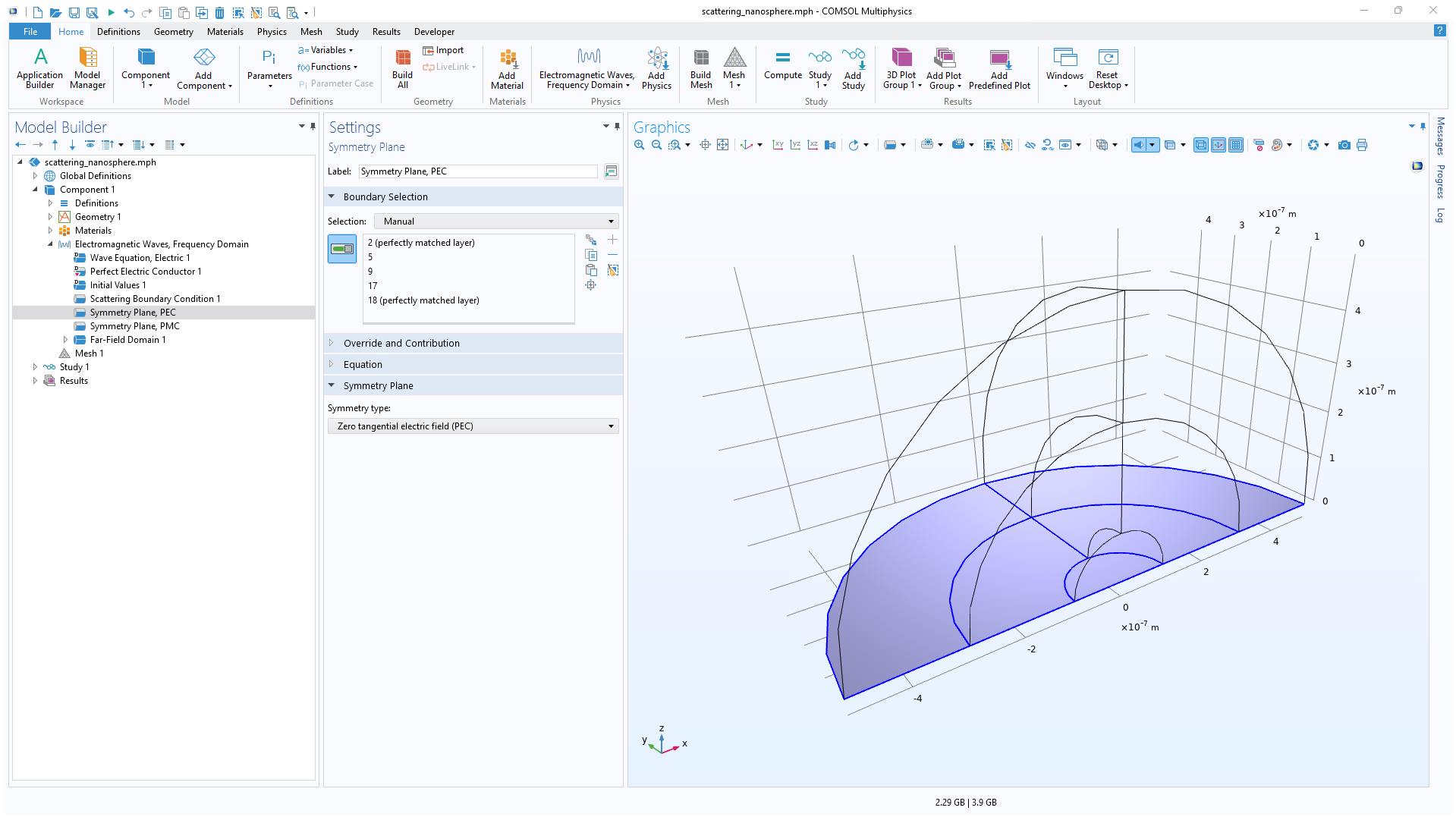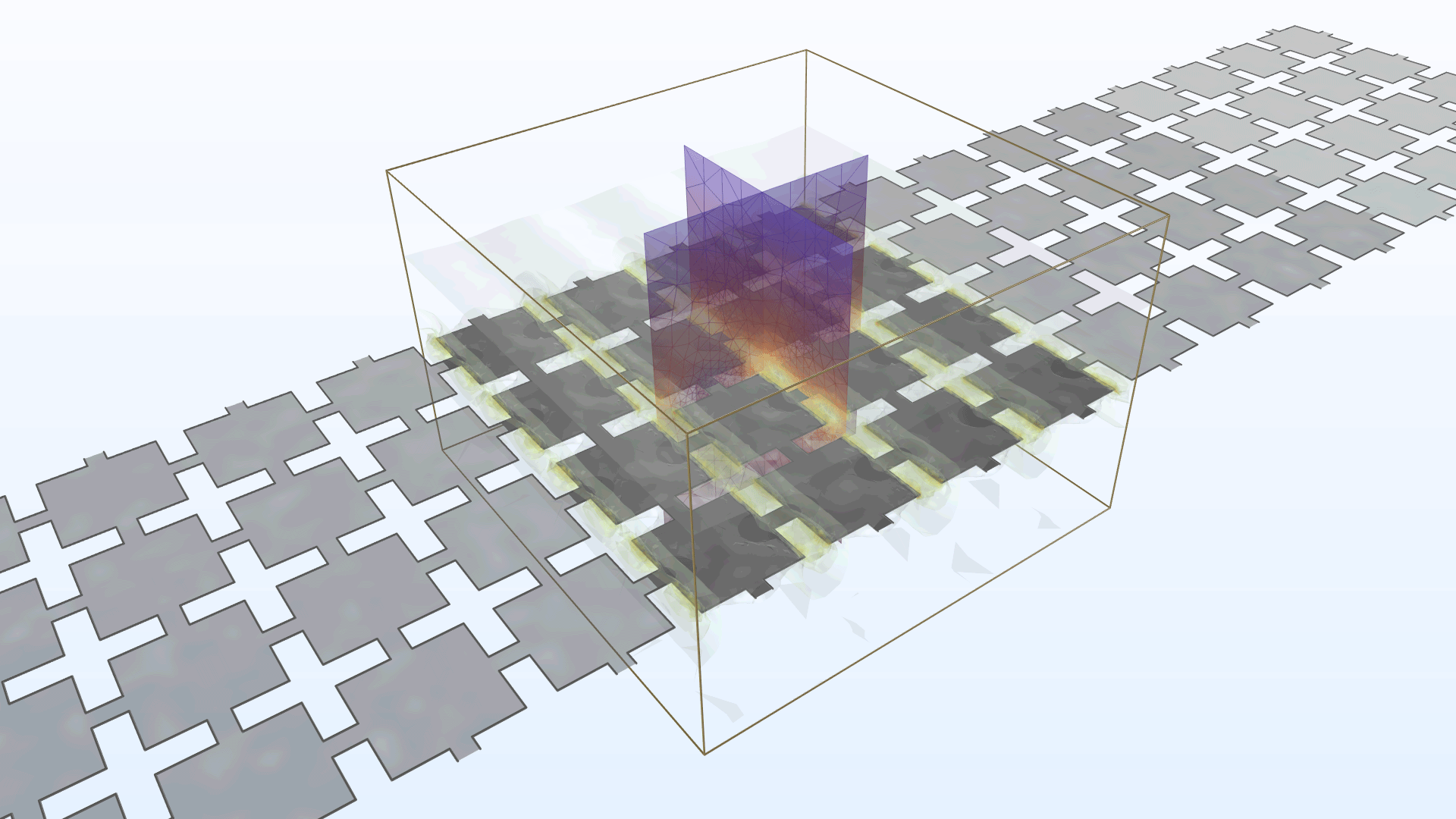support@comsol.com
Wave Optics Module Updates
For users of the Wave Optics Module, COMSOL Multiphysics® version 6.1 introduces dielectric scattering functionality, the Linearly polarized plane wave background field feature in 2D axisymmetry, and new tutorial models. Read about these updates and more below.
Dielectric Scattering with the Electromagnetic Waves, Boundary Elements Interface
The interaction of electromagnetic waves with dielectric objects is now supported for the boundary element method, including the calculation of the associated far-field scattering properties. The new functionality is available in the Electromagnetic Waves, Boundary Elements interface. It requires adding a Wave Equation, Electric node to each dielectric scatterer domain. Furthermore, a Far-Field Calculation node can be added to evaluate far-field quantities such as the scattering amplitude. You can see this feature demonstrated in the new Optical Yagi-Uda Antenna model.
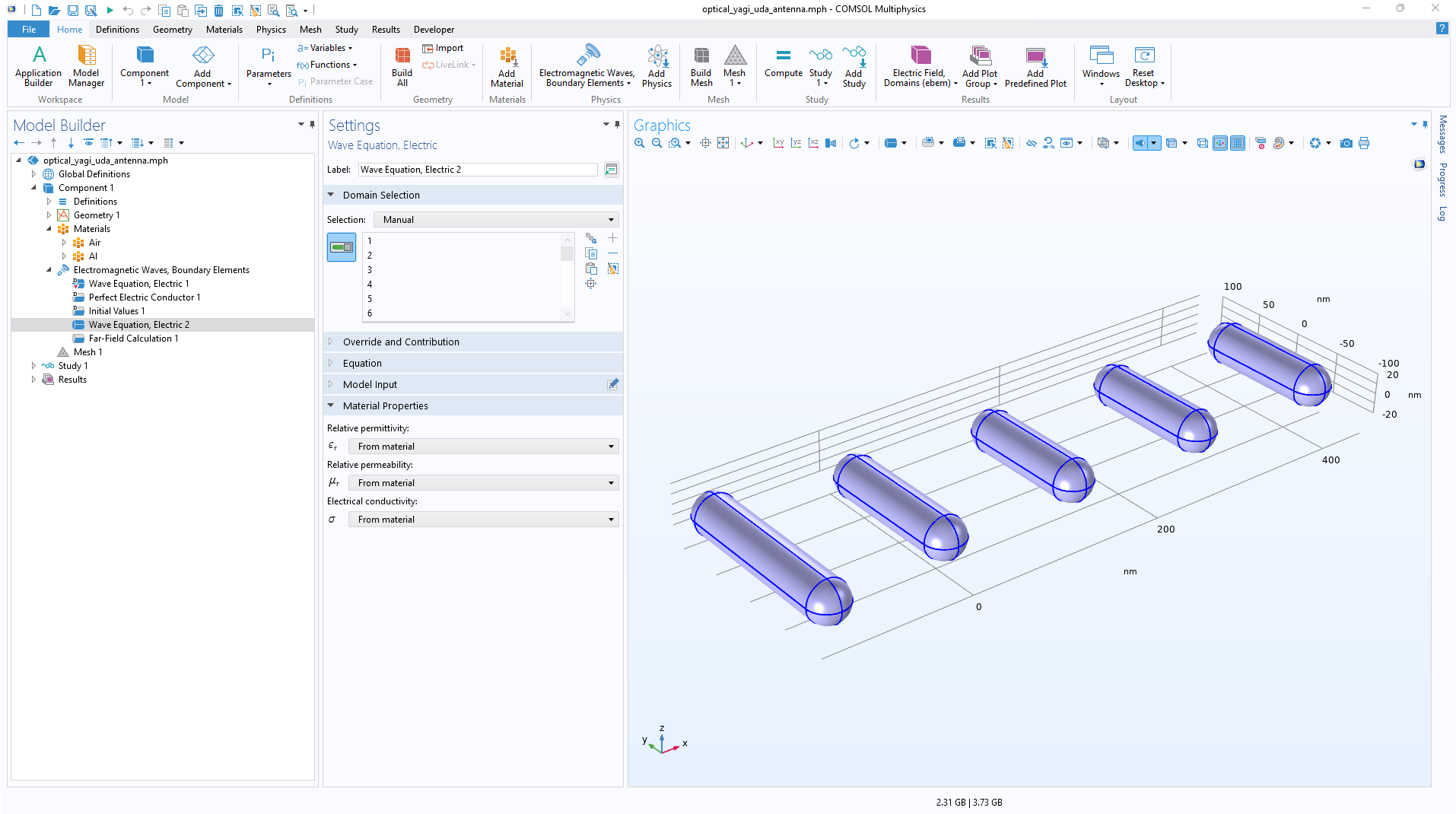
Layered Impedance Boundary Condition
New functionality enables you to model multiple thin layers on top of a substrate with small skin depth. This includes, for example, modeling thin dielectric coatings on a metal surface. Such thin layers can be described using the Layered Impedance Boundary Condition feature, available in the Electromagnetic Waves, Frequency Domain interface. It requires combining a Layered Material in the global Materials and a Layered Material Link in the Materials node. You can see this feature demonstrated in the new Enhanced Coating for a Microelectromechanical Mirror model.
Layered Transition Boundary Condition
The Layered Transition Boundary Condition in the Electromagnetic Waves, Frequency Domain interface has now also been added to the Electromagnetic Waves, Beam Envelopes interface. The Layered Transition Boundary Condition has also been updated to include all material models that are available for the Transition Boundary Condition, which simplifies the definition of the material parameters for the boundary condition.
Linearly Polarized Plane Wave Background Field in 2D Axisymmetry
The Linearly polarized plane wave background field type with arbitrary polarization and incident angle is now available for 2D axisymmetry and utilizes an expansion method. It is suitable for modeling the scattering of bodies of revolution under plane-wave excitation. When compared with modeling the same problem in 3D, the 2D axisymmetric model uses significantly less memory and time, especially for electrically large scatterers, and facilitates using a denser mesh for improved accuracy. When using the Linearly polarized plane wave background field in 2D axisymmetry, an auxiliary sweep of the azimuthal mode number is automatically added. To construct the full solution, summing over the contribution from each azimuthal mode is required in postprocessing. You can see this feature demonstrated in the new Cloaking of a Cylindrical Scatterer with Graphene (Wave Optics) model.
New Easy-To-Use Symmetry Plane Feature
The Symmetry Plane feature simplifies the definition of perfect electric conductor (PEC) and perfect magnetic conductor (PMC) symmetry planes. This feature is used instead of the Perfect Electric Conductor and Perfect Magnetic Conductor boundary conditions when reducing the model size from symmetry considerations. Furthermore, the information about the type and location of the Symmetry Plane features are used when calculating far fields and when defining analytical Port mode fields and Lumped Port impedance. You can see this new feature in the following models:
Finite Element Method (FEM)–Boundary Element Method (BEM) Multiphysics Coupling
A new FEM–BEM coupling feature simplifies the setup of hybrid FEM–BEM models for electromagnetic waves. This is available in the Model Wizard as an Electromagnetic Waves, FEM-BEM multiphysics interface, which combines the Electromagnetic Waves, Frequency Domain and Electromagnetic Waves, Boundary Elements interfaces with a new Electric Field Coupling multiphysics coupling feature.
Weak Formulation Port Option
When expanding the electric field on a port boundary, the new Weak port formulation adds a scalar dependent variable for the expansion coefficient (the S-parameter) and then solves for the S-parameters and the tangential electric field on the boundary using only a weak expression. Since no constraints are used, this formulation completely removes the constraint-elimination step when solving. This new port formulation replaces the constraint-free port formulation that was introduced in version 6.0.
You can see this new port formulation in almost all port-based tutorial models, such as:
Covariant Formulation in 2D Axisymmetry
In the 2D axisymmetric formulation, it is beneficial to formulate the out-of-plane dependent variable as
,
which is referred to as the covariant formulation. Here, Ψ is the dependent variable and is the radial coordinate. The out-of-plane electric field component is thereby calculated as
The covariant formulation has better performance in terms of numerical stability and accuracy. Compared to previous versions, eigenfrequency simulations can return fewer eigenfrequencies; however, the returned solutions have better accuracy, and there are many fewer spurious solutions returned.
This formulation is used for all study types except Mode Analysis and Boundary Mode Analysis and can be viewed in the following models:
- cylinder_graphene_cloak
- step_index_fiber_bend
- vertical_cavity_surface_emitting_laser
- whispering_gallery_mode_resonator
No Incident Field Option For Scattering and Matched Boundary Conditions
For the Scattering Boundary Condition and Matched Boundary Condition in the Electromagnetic Waves, Beam Envelopes interface, there is now a default option for the Incident field parameter: the No incident field value. You can use this option if there are only outgoing waves at the boundary. The following existing models highlight this option:
Plotting Analytical Port Mode Field Before Computation
The mode fields of the Rectangular, Circular, and Coaxial port types are described by analytical functions. In this version, these types of port modes can be previewed before running the simulations, with the condition that the Port boundaries are parallel to the major axes.
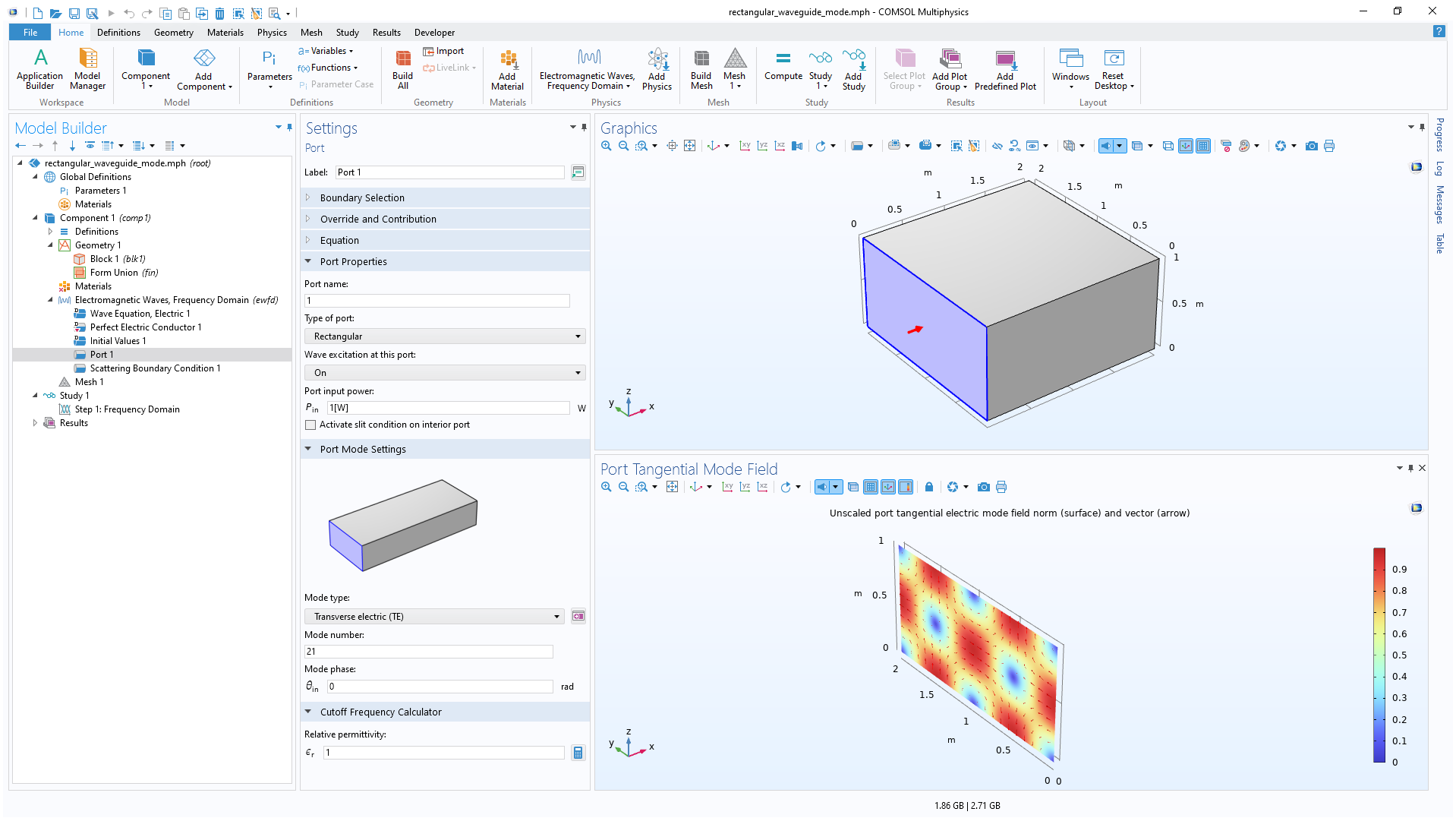
Upwind Flux Formulation
The Flux type parameter in the Wave Equations node for the Electromagnetic Waves, Time Explicit interface now also includes an Upwind flux option. This option can be used to improve S-parameter calculations that may have low accuracy due to overdissipation around perfect electric conductor (PEC) edges, which can occur when using the default Lax-Friedrichs flux parameters.
Skin Depth Calculator
A new skin-depth calculator functionality can be used to compute skin depth, which can be defined by the electrical conductivity or resistivity of a material. This can help you determine if the application of a particular boundary condition is appropriate. The Skin Depth Calculator is available in the settings of the Impedance Boundary Condition, Transition Boundary Condition, Layered Impedance Boundary Condition, and Layered Transition Boundary Condition features. The Skin Depth Calculator feature is showcased in the following models:
New Tutorial Models
COMSOL Multiphysics® version 6.1 brings several new tutorial models to the Wave Optics Module.
Optical Ring Resonator Notch Filter 3D
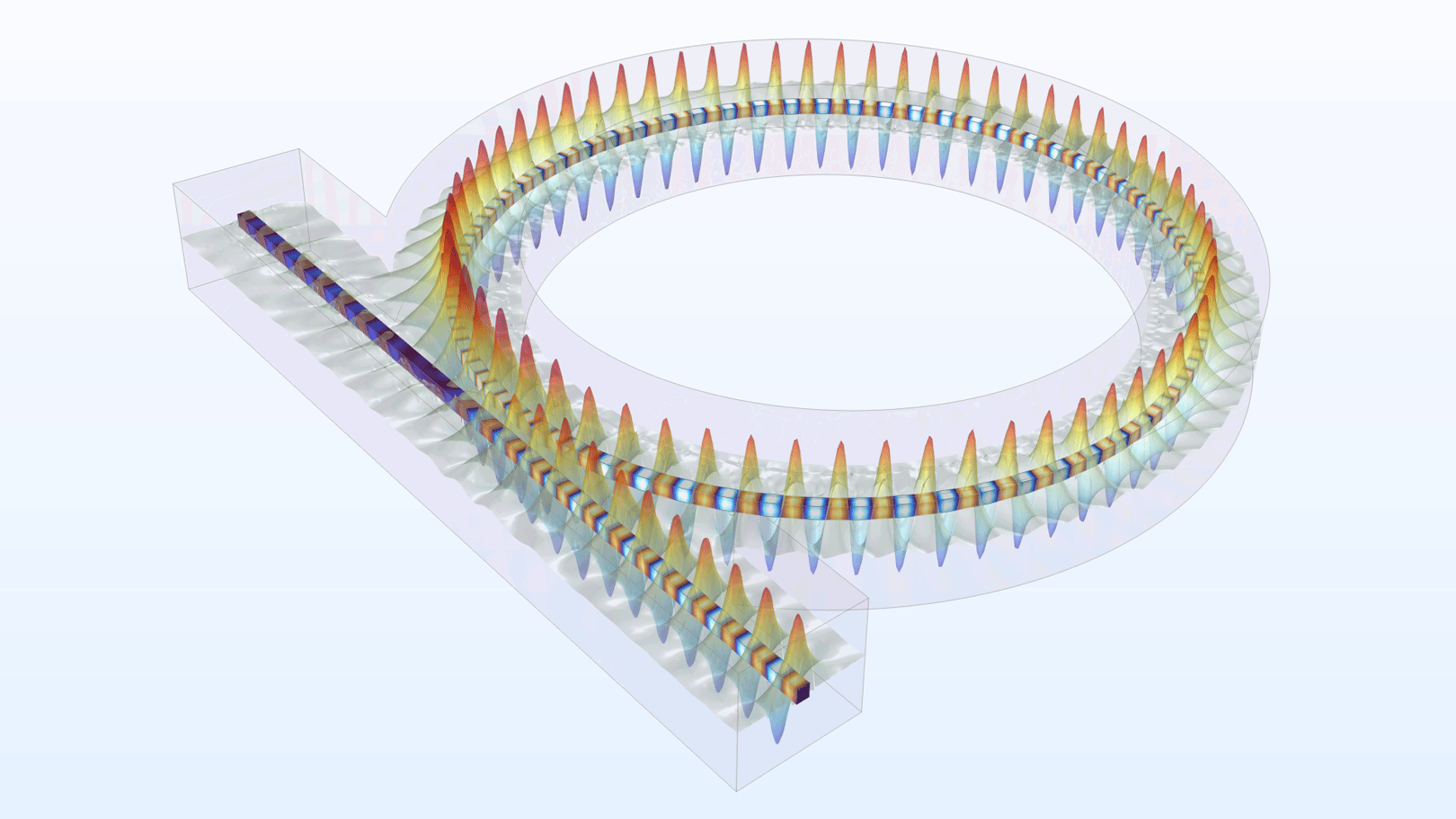
Application Library Title:
optical_ring_resonator_3D
Download from the Application Gallery
Optical Yagi-Uda Antenna
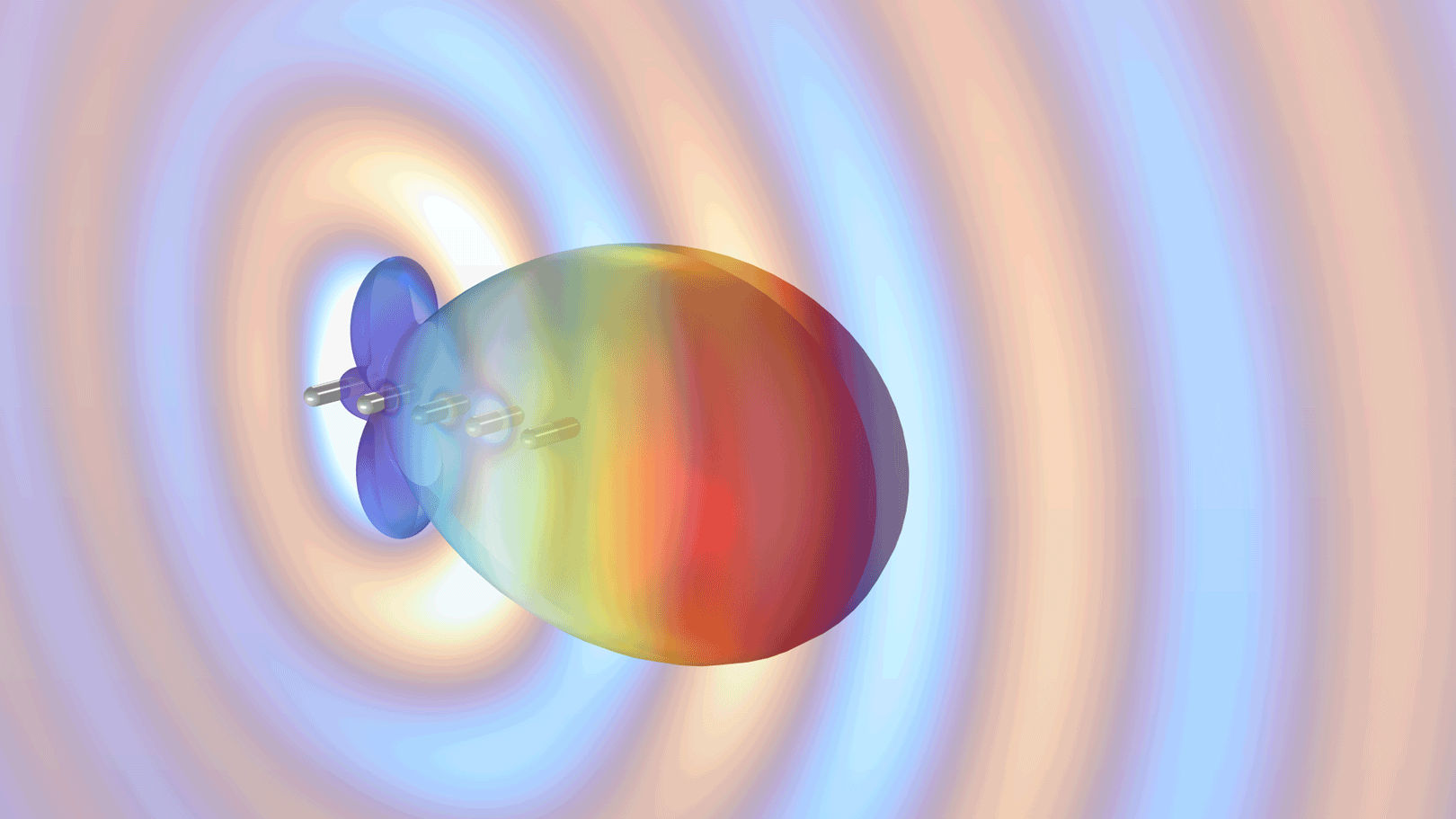
Application Library Title:
optical_yagi_uda_antenna
Download from the Application Gallery
Cloaking of a Cylindrical Scatterer with Graphene
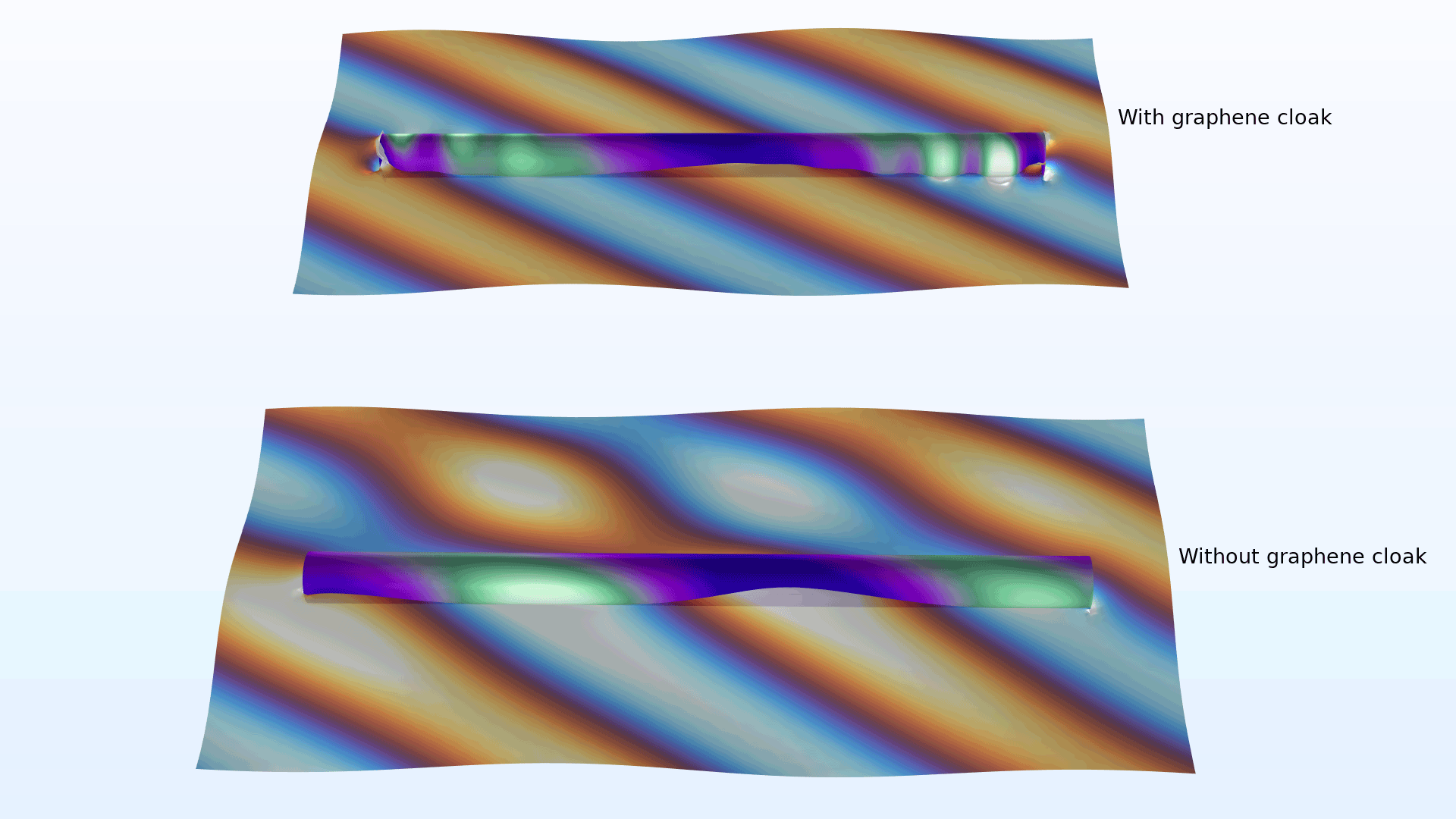
Application Library Title:
cylinder_graphene_cloak
Download from the Application Gallery
Graphene Metamaterial Perfect Absorber
Application Library Title:
graphene_metamaterial_perfect_absorber
Download from the Application Gallery
Enhanced Coating for a Microelectromechanical Mirror
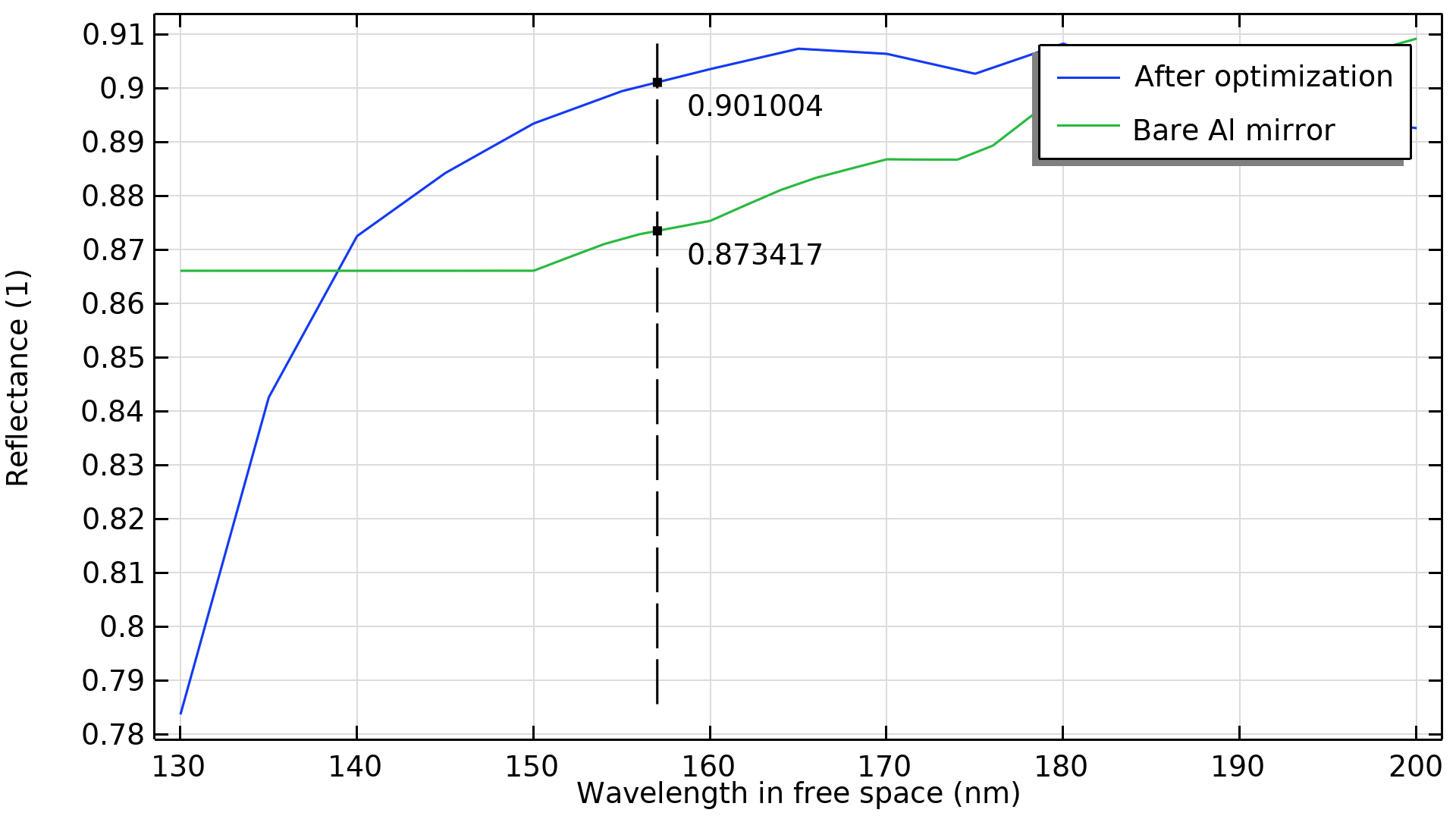
Application Library Title:
enhanced_mems_mirror_coating
Download from the Application Gallery
Tapered Waveguide
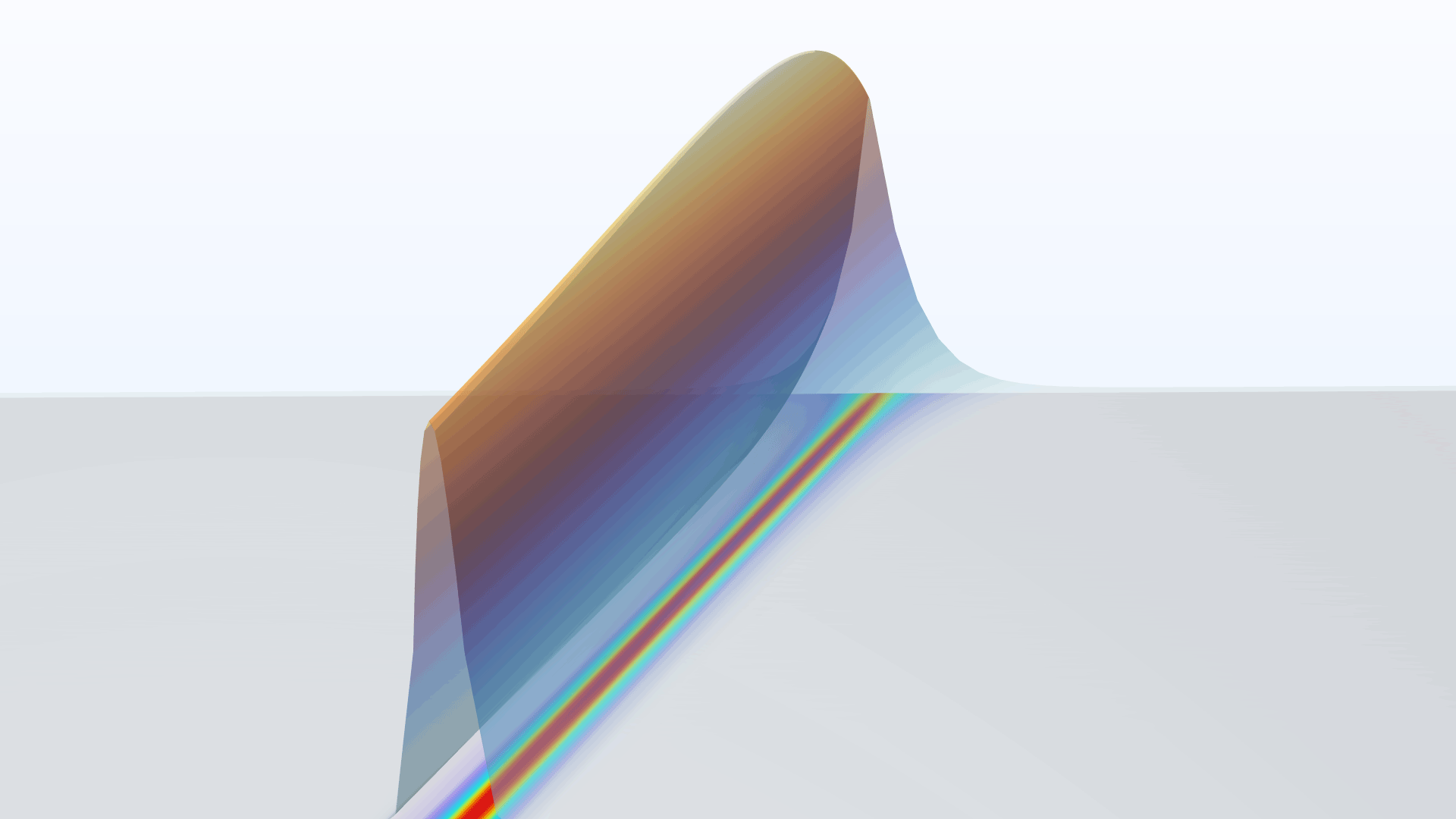
Application Library Title:
tapered_waveguide
Download from the Application Gallery

